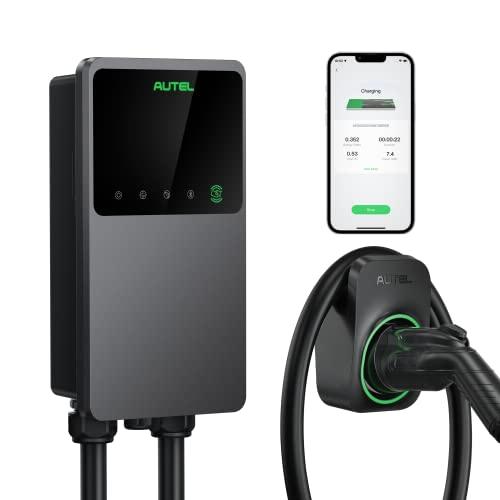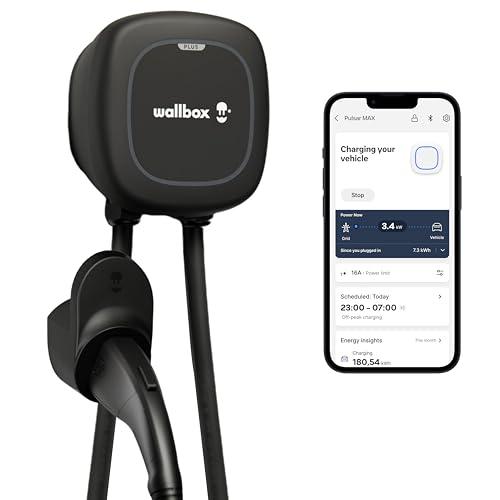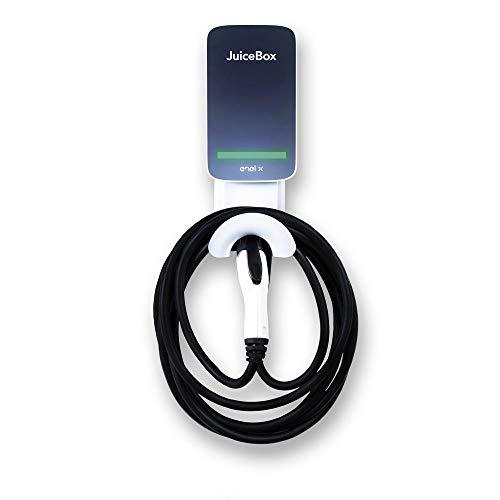Time
Charge Faster and Smarter: Unlocking the Power of Rivian R1S Charging Time Calculator
Essential Factors Influencing Rivian R1S Charging Time
When it comes to electric vehicles, one of the most important considerations is understanding how long it will take to charge your EV. With the Rivian R1S Charging Time Calculator, you can make sure that your EV is always ready to go when you need it. In this article, we’ll give you an overview of the various factors that can impact the charging time of your Rivian R1S.
To calculate the total time needed for charging your Rivian R1S, you need to consider several factors. The main factor that affects the time needed for charging is the battery capacity of your Rivian R1S. The battery capacity of Rivian R1S is 180 kWh. With this battery capacity, you can get a range of up to 300 miles on a single charge.
Another important factor that can affect the charging time of your Rivian R1S is the temperature outside. If it’s cold outside, your electric vehicle may take longer to charge due to the decreased efficiency of its battery. On the other hand, if it’s hot outside, the battery may charge faster than normal due to the increased efficiency of its battery.
Calculate Your Charging Time – Level 2 and Level 3 DC Fast Chargers
To calculate the total time needed for charging your Rivian R1S, you need to know the battery capacity of your Rivan R1S and the type of charger you are using. To calculate the time required for charging your Rivian R1S with a Level 2 charger, you need to divide the battery capacity of your Rivian R1S (180 kWh) by the charging speed of the Level 2 charger (8-10 kW). This will give you the total time needed for charging your Rivian R1S with a Level 2 charger. So the charging time on the popular Chargepoint Flex will be about 13 hours. Similarly, to calculate the total time needed for charging your Rivian R1S with a Level 3 DC fast charger, you need to divide the battery capacity of your Rivian R1S (180 kWh) by the charging speed of the Level 3 DC fast charger (250 kW).
In addition to the time needed for charging, you also need to consider the time needed for cooling down the battery after charging. The cooling time of the battery depends on the temperature of the battery and the type of charger you are using. It is advisable to allow for a minimum of 2 hours for the battery to cool down after charging with a Level 2 charger or 4 hours for a Level 3 DC fast charger.

Maximizing Rivian R1S Battery Longevity and Health
Ensuring the longevity and health of your Rivian R1S battery is crucial. Regular maintenance and understanding the best charging practices can significantly extend the life of the battery. Avoiding extreme temperatures, both hot and cold, and maintaining a consistent charging routine can prevent unnecessary strain on the battery cells, thereby enhancing their lifespan and performance.
Advanced Features of Rivian R1S Charging Time Calculator
Personalizing Your Rivian R1S Charging Strategy
The Rivian R1S Charging Time Calculator offers features to personalize your charging strategy. By inputting specific details about your vehicle's current state of charge and your desired charge level, the calculator can provide a tailored charging plan that fits your schedule and maximizes efficiency.
Interactive Tools and Resources for Rivian R1S Owners
Rivian R1S owners have access to a suite of interactive tools and resources. These include detailed tutorials on optimizing charging times, forums for discussing strategies with fellow owners, and updates on the latest software enhancements for the charging calculator.

Rivian R1S Charging Infrastructure Explained
Comparing Home vs. Public Charging Options for Rivian R1S
Another factor to consider when calculating the charging time of your Rivian R1S is the speed at which you're charging. Generally, public charging stations provide faster charging speeds than charging from a home outlet, so you can expect to get your battery back up to full quicker when you’re out and about.
When it comes to charging at a public station, there are a few things that you should keep in mind. First, you should make sure that you're using the charger correctly. Make sure that the plug is properly connected and that the wire is connected securely. Also, be sure to check the wattage of the charger and make sure that it’s compatible with your Rivian R1S.
Mapping Out Rivian R1S Compatible Charging Stations
For Rivian R1S owners, knowing the locations of compatible charging stations is essential. Many apps and online maps are now available, showing real-time availability and the types of chargers at each location, making it easier to plan long trips or find quick charging options in urban areas.
Optimizing Rivian R1S Charge Times
Strategies for Faster Charging with Rivian R1S
The next factor that affects the time needed for charging the Rivian R1S is the type of charger you use. Different types of chargers provide different charging speeds. The most common chargers used for Rivan R1S are Level 2 chargers and Level 3 DC fast chargers. Level 2 home chargers provide charging speeds of up to 8-10 kW, while Level 3 DC fast chargers provide charging speeds of up to 250 kW.

Impact of Driving Habits on Rivian R1S Charging Efficiency
Driving habits significantly impact the charging efficiency of the Rivian R1S. Frequent acceleration and high-speed driving can drain the battery faster, leading to more frequent and longer charging times. Adopting a smoother driving style can increase the range per charge and reduce overall charging time.
Technological Innovations in Rivian R1S Charging
Exploring Cutting-Edge Charging Technologies for Rivian R1S
Recent advancements in charging technology have led to the development of ultra-fast chargers, wireless charging options, and smart charging systems that optimize charging based on grid demand. These innovations promise to further reduce charging times and enhance the convenience for Rivian R1S owners.
Future Trends in Electric Vehicle Charging for Rivian R1S
The future of electric vehicle charging points to more sustainable and efficient practices. Innovations like solar-powered charging stations and bidirectional charging, where vehicles can supply power back to the grid, are expected to revolutionize the way we think about EV charging.
Navigating Rivian R1S Charging Challenges
Overcoming Common Obstacles in Rivian R1S Charging
Common challenges in charging the Rivian R1S include finding compatible charging stations, adapting to variable charging speeds, and managing long charging times during trips. By staying informed and planning ahead, these challenges can be effectively managed.

Troubleshooting Tips for Rivian R1S Charging Issues
If you encounter issues while charging your Rivian R1S, simple troubleshooting steps like checking the connection, resetting the charger, or consulting online forums and customer support can often resolve the problem quickly and efficiently.
Environmental Impact of Charging the Rivian R1S
Assessing the Carbon Footprint of Rivian R1S Charging
Charging the Rivian R1S, like any electric vehicle, has an environmental impact, largely dependent on the source of electricity. Using renewable energy sources for charging can significantly reduce the carbon footprint associated with electric vehicle use.
Sustainable Charging Solutions for Rivian R1S Owners
Sustainable charging solutions, including using green energy providers or installing solar panels at home, can greatly reduce the environmental impact of owning and charging an EV like the Rivian R1S.
Cost-Effective Charging for Rivian R1S
Breaking Down the Economics of Rivian R1S Charging
Understanding the cost structure of charging your Rivian R1S is essential. Factors such as the price of electricity, the type of charger used, and charging time play a significant role in the overall cost of charging an EV.
Maximizing Savings with Smart Rivian R1S Charging Practices
Smart charging practices, such as charging during off-peak hours or utilizing free public charging stations, can help Rivian R1S owners save on charging costs while also reducing strain on the electric grid.
Rivian R1S Charging Time Calculator: User Experiences
Real-World Testimonials and Stories from Rivian R1S Owners
Real-world experiences from Rivian R1S owners provide valuable insights into the practicalities of owning and charging an EV. These stories can offer tips, advice, and reassurance to prospective and current owners alike.
Community Insights: Tips and Tricks from the Rivian R1S User Base
The Rivian R1S community is a rich source of shared knowledge. Online forums and social media groups offer a platform for owners to share their experiences, offering tips and tricks on everything from maximizing range to finding the best charging stations.

By considering all of these factors, you can now easily calculate the total time needed for charging your Rivian R1S. Charging your Rivian R1S will not only help you get to your destination quickly and efficiently, but will also extend the life of your battery.
By using the Rivian R1S Charging Time Calculator, you can easily figure out exactly how long it will take to charge your EV. This calculator makes the process of charging your Rivian easy and straightforward.






